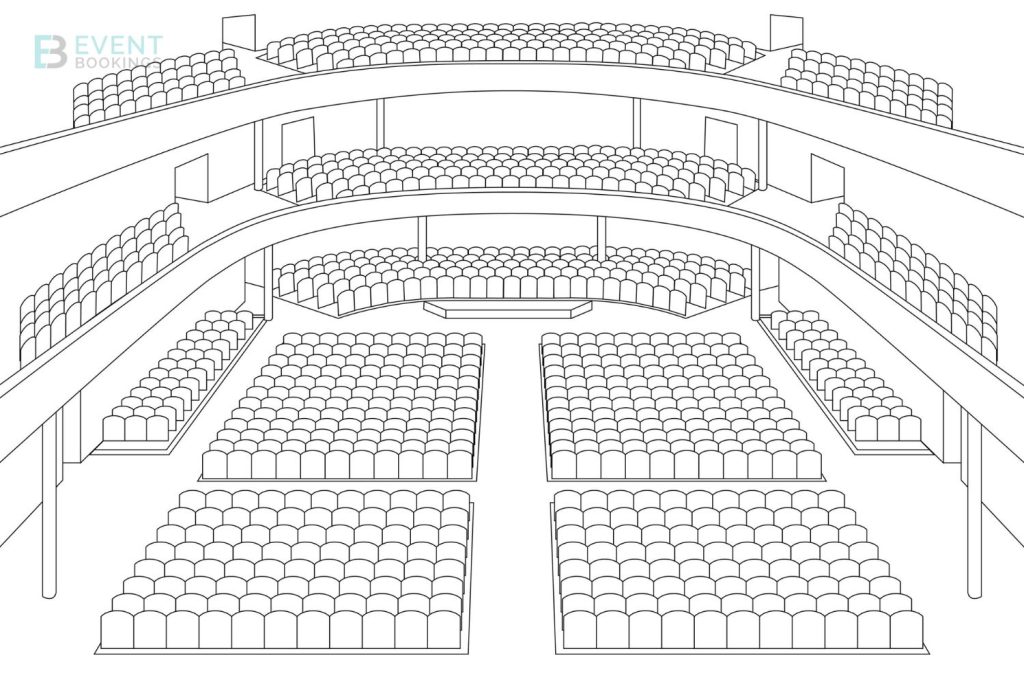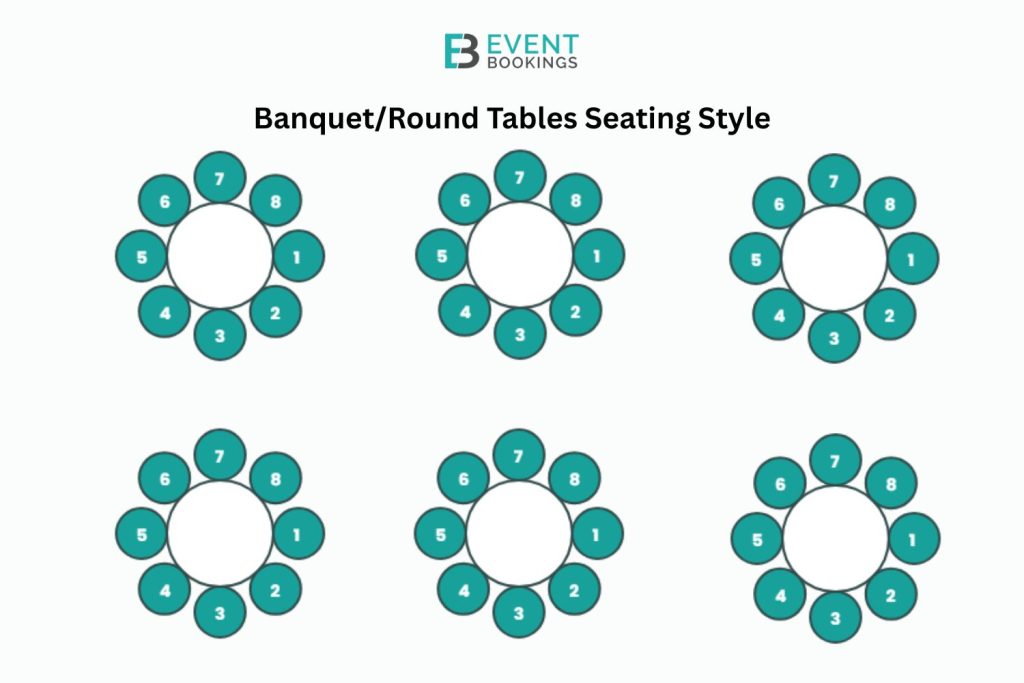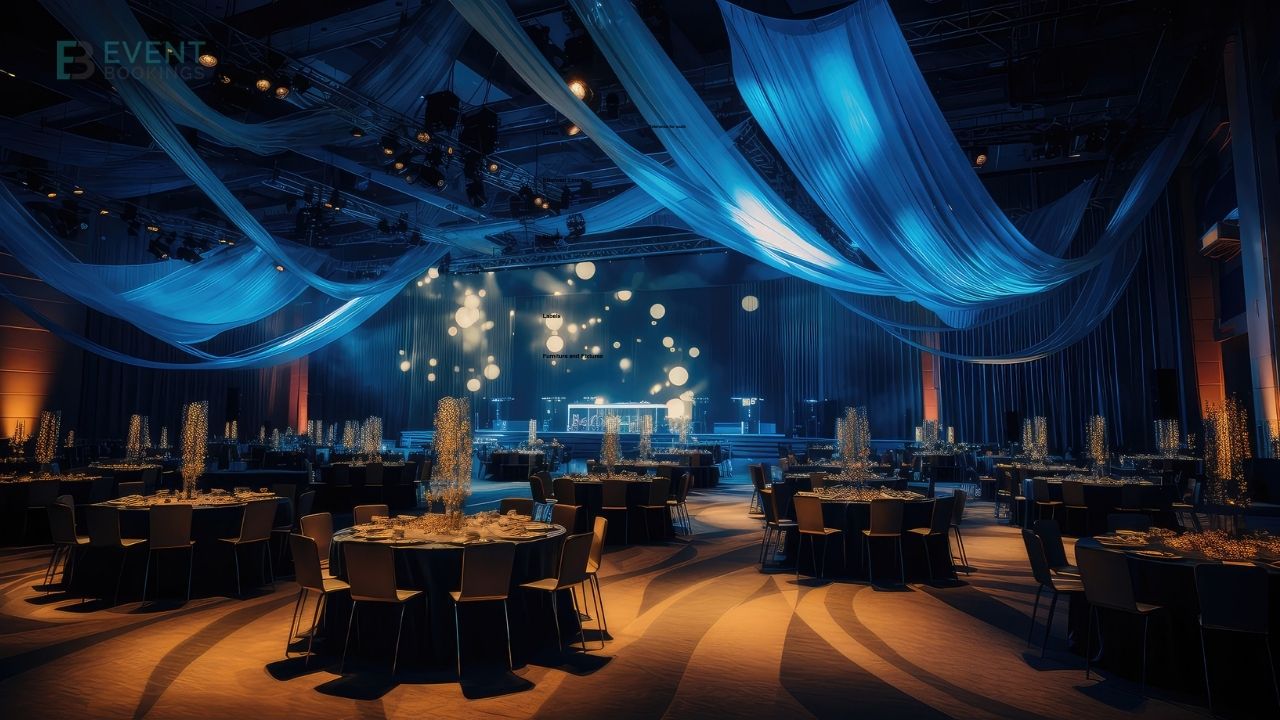Any event’s venue layout has the power to make or ruin the experience. Attendee engagement can be significantly impacted by planning something as basic as event room layouts. It is crucial to produce memorable events and fruitful networking, despite the fact that organisers often overlook it.
Are you an event organiser?
Are you also wondering how to make events more interesting?
Well, in simple words, the answer is event layout. A few creative event layout ideas and their proper execution with the right tools can actually change your event planning game.
Since maintaining the event’s quality and integrity is crucial, this guide will provide you with some excellent advice and imaginative layout ideas to find the best venue spaces, regardless of the size of the venue and the type of event. Be it in-person, virtual and hybrid event layouts, this blog has got you covered with all the original venue layout tips you will need to know.
The Foundation: 3 Core Elements of Event Layout Design
Can an event floor plan actually enhance your event flow and the whole execution process? Well, definitely if you know the basics of it and practice it correctly. Here are three core elements to which you should first be introduced-
1. Traffic Flow & Wayfinding
A crucial component of any event is creating a traffic flow that enables guests to move in a methodical manner. And no, it’s not as easy as making different routes. You must prepare for potential complications, such as crowds congregating around specific booths or bottlenecks at busy locations like the registration desk or food stations.
Wayfinding is another major concern in this aspect. To do this correctly, begin by determining the primary paths that attendees will take, such as from booths to catering stations, from sessions to breakout areas, or from the entrance to the registration desk. Make sure these routes are sufficiently wide to handle the anticipated number of people without creating traffic.
2. Defining Your Event Goals
Establish your event’s objectives and main goals before beginning to focus on event layout design. After all, your objectives influence how you think about what needs to be accomplished. The kind of event you’re hosting should be connected to your objectives. Aligning your event’s floor plan with the precise, quantifiable results you hope to attain is also crucial. This involves:
- Consider the total number of attendees you are planning to have in your particular event.
- If you are targeting to gain more attendee satisfaction scores, try providing a worthwhile experience.
- If your goal is to gain more revenue or leads, then position sponsors or donation stations would be ideal.
3. Safety, Accessibility, and Compliance (The Non-Negotiables)
Although creativity and aesthetics frequently take centre stage when it comes to event layout, safety and inclusivity are the true cornerstones of a great design. These are the unseen factors that give visitors a sense of security, comfort, and welcome.
- Safety: Consider safety as the foundation upon which your entire event is built. Think about how people will move in an emergency before deciding where to set up stages, food stations, or seating sections. Are the exits easily accessible and clearly visible? Is there enough space to evacuate quickly if necessary?
- Accessibility (ADA/Local Compliance): Regardless of physical ability, everyone can fully participate in an inclusive event. Being accessible means treating each guest with dignity and consideration. Create a room that is easy to navigate for visitors who use strollers, wheelchairs, or other mobility aids. Plan event seating arrangements with good visibility of important areas like the stage or presentation screens, and make sure doorways and pathways are sufficiently wide, and install ramps or lift access where necessary.
- Capacity Check: Every venue has its boundaries, and it’s important to respect them. In addition to being uncomfortable, crowding can quickly become a safety hazard. Keep in mind that every chair, table, and ornamental piece takes up usable space when creating your layout. Make sure your event floor plan has space for movement at all times so that visitors won’t have to cram themselves into small spaces or stand in line for necessities.
7 Creative Event Layout Ideas to Make Your Event Space More Efficient
Event layout arrangements must maximise attendee interaction and concentration while also taking aesthetics into consideration. This section will examine seven tried-and-true event layout designs that increase participation and enhance the event experience.
A. For Learning & Presentations:
These layouts are specifically concentrated on knowledge-focused or presentation-based events-
- Theatre/Auditorium: For presentations and keynote addresses, the traditional theatre-style setup, which consists of rows of chairs facing a stage or podium, remains popular. Staggering seats to allow attendees to see between the heads in front of them will maximise its effectiveness. Wider aisles spaced 14–16 seats apart facilitate emergency exits and traffic flow while preserving unobstructed views of the stage.

This arrangement naturally supports tiered pricing zones for larger venues, with standard seating in the middle, premium seats in the centre-front sections, and affordable options near the back. For ADA compliance, keep in mind to set aside easily accessible spaces close to aisles when designing these sections.
- Classroom: By adding tables, the classroom arrangement elevates the conventional theatre layout and creates the ideal setting for active learning and participation. Attendees have a stable surface for laptops, notebooks, and other materials thanks to this arrangement, which consists of multiple rows of tables with chairs facing the presenter’s area.

To promote organic small-group conversations without the need to move furniture, arrange tables in a slight chevron pattern (angled slightly inward). Think about adding USB charging stations and power strips along table rows to update this traditional design.
By strategically placing gaps between every third or fourth table, you can also establish mini-collaborative zones.
- U-Shape / Hollow Square: Do you want to establish an atmosphere where every attendee feels included in the discussion? The U-shaped arrangement, in which guests are seated around the outside edge of a horseshoe formed by tables, may be the answer.
Place your main screen or whiteboard at the open end, but keep it slightly off-centre, to get the most out of this arrangement. This makes the presentation area clear and allows the presenter to move aside without obstructing anyone’s view. Install cameras at both ends of the U for hybrid events to record organic dialogue between participants who are present in person and those who are not.
To preserve intimacy while accommodating more guests in larger groups (more than 20), think about using a double-U setup that creates an inner and outer U.
B. For Interaction & Networking:
Creating a network and boosting interaction can be the main motto of some events. If you are planning that sort of event, these seating arrangements will be more helpful for you-
- Banquet/Round Tables: Round tables are arranged throughout the room in banquet-style seating, making them ideal gathering places for conversation and networking. Generally speaking, 60-inch (5-foot) round tables can comfortably seat 8–10 people, while 72-inch (6-foot) tables can hold up to 12. To facilitate easy movement and conversation without excessive cross-table noise, keep tables at least 6 feet apart.

Tables should be angled in a herringbone pattern towards the stage for events with presentations so that no guest has their back to the speakers.
Try the “social engineering” strategy to increase networking potential: use numbered seats to mix up attendee groups between sessions or place conversation starter cards at each table.
- Cocktail/Reception: For informal social gatherings where interaction is the main focus, lounge or cocktail seating works best. These arrangements, which are frequently seen at events like cocktail parties, networking gatherings, or informal receptions, encourage a relaxed vibe.
The goal is to move away from inflexible, conventional seating arrangements and towards an adaptable, interactive experience.
Expect even more mobility at cocktail parties, where high tables and typically no chairs encourage attendees to stand and mingle. Bar stools, tall tables, and small seating sections strewn throughout the room define these types of event seating arrangements, which create a laid-back ambience that encourages socialising.
- Interactive Pods / Stations: One of the most adaptable and captivating contemporary formats is interactive pods. The space is separated into smaller stations, or “pods,” each devoted to a distinct subject, activity, or sponsor, rather than having a single focal point. Attendees can move at their own pace while maintaining a high level of energy thanks to this arrangement.
Pods are particularly useful for training sessions, exhibitions, and innovation showcases where practical experiences are important. These could be branded lounges, discussion areas, or demo booths.
Expos, networking lounges, skill-based sessions, and multi-theme events are all excellent uses for this type of event space planning.
C. The Modern Solution:
As technology keeps improving every day, modern events require an updated event layout or seat planning.
- Hybrid/Zone Layout (The Future of Events): The way we create events changes as they do. Attendees can choose how they want to experience the event thanks to the hybrid or zone layout, which combines several setups within one venue.
For large conferences, corporate summits, or community expos where learning, networking, and entertainment all take place simultaneously, this layout is the most flexible.
For instance, you might have interactive pods for live demos, a lounge area for casual conversations, and a theatre area for presentations—all under one roof. The central component of this model ought to be digital integration. Digital Q&A hubs, live-streamed sessions, and screens for remote participation all aid in bridging the gap between in-person and virtual attendees.
How to use EventBookings event layout software to enhance your event planning
Before a single chair is placed, EventBookings is a powerful planning tool that helps you visualise your space, arrange your seating, and give your event setup structure. You can create a precise, organised layout that directly affects ticket sales by using its allocated seating feature.
It improves your event planning process in the following ways:
Link ticketing to your layout.
Assign different ticket types to particular sections or seats. General admission seats can be found in the middle or back rows, while VIP tickets can be found in the premium front-row sections.
Give attendees control and clarity.
During checkout, customers can select their preferred seats in real time by viewing the interactive seat map.
Streamline the logistics of the event day.
Organisers can determine precisely where guests are seated with the aid of a mapped layout. Sponsor-reserved spaces and wheelchair-accessible locations can be clearly marked if you prepare event setup ideas on this platform.
Demonstrate a more polished experience.
A well-organised and reliable seat map is appealing to buyers. From the perspective of the organiser, it’s an effective way to control capacity and produce a polished, well-managed event.
Floor Plan Design Best Practices & Transformation Tips
Designing a space that works for your event and keeps guests comfortable and interested is the goal of creating an effective floor plan. The following are some recommended practices:
A. Integrate Technology Seamlessly
Technology has the power to make or ruin an event. Think about:
- A/V Placement: Arrange speakers, screens, and projectors so that the event stage design is visible to all guests.
- Charging stations: Make it simple for visitors to charge gadgets without interfering with the room’s flow.
- Wi-Fi Hotspots: Make sure your venue has reliable connectivity so guests can communicate and stay connected throughout the event.
B. Use the Power of Light and Décor
Decor and lighting are more than just aesthetics. In actuality, they set the mood and direct attention. To improve your audience engagement layout, use focused lighting on the stage, accent walls, or decorative elements to naturally draw attendees’ attention.
C. Test and Iterate (The Pre-Event Walkthrough)
Before any guests arrive, don’t forget to walk through the whole space with your team. Firstly, make sure the pathways are clear for movement and don’t have any obstacles. Check everything from different areas. For tech-based elements, make sure to trial and test before the final execution.
Final Thoughts?
As an organiser, you might tend to ignore or focus on the last minute of event space planning. However, if you want the event to be successful and free from any attendee dissatisfaction, start focusing and concentrating on event setup ideas. With the seven major effective tips we have reflected in this blog, you can be more than prepared for your next event.
To get help with event seating arrangements or any event ticketing issues, contact EventBookings today.




